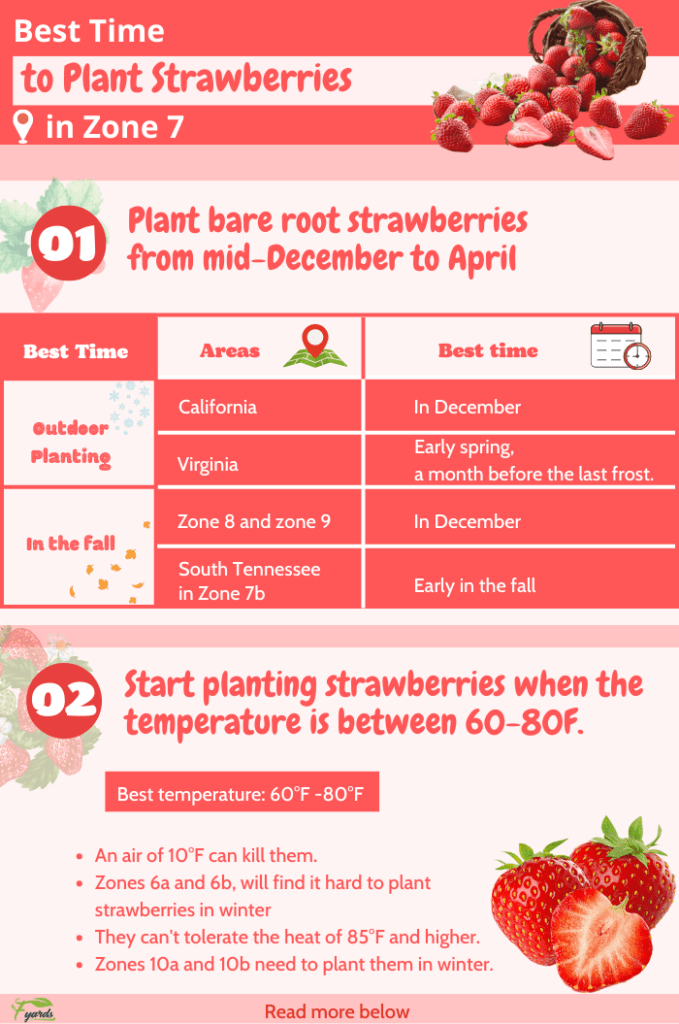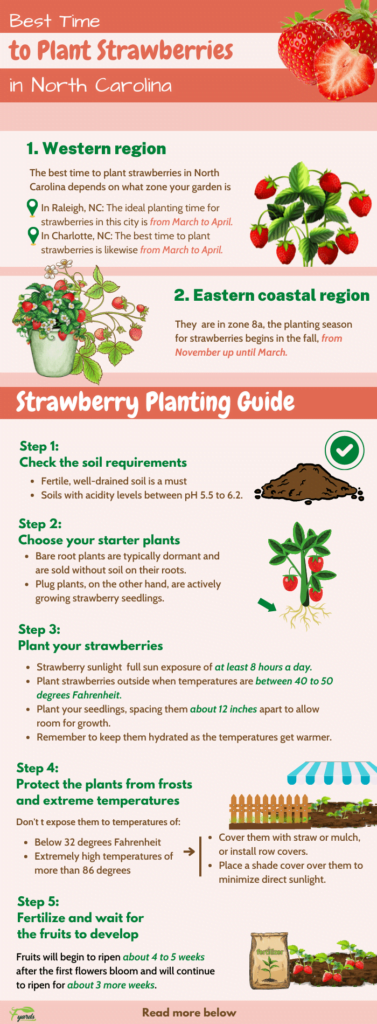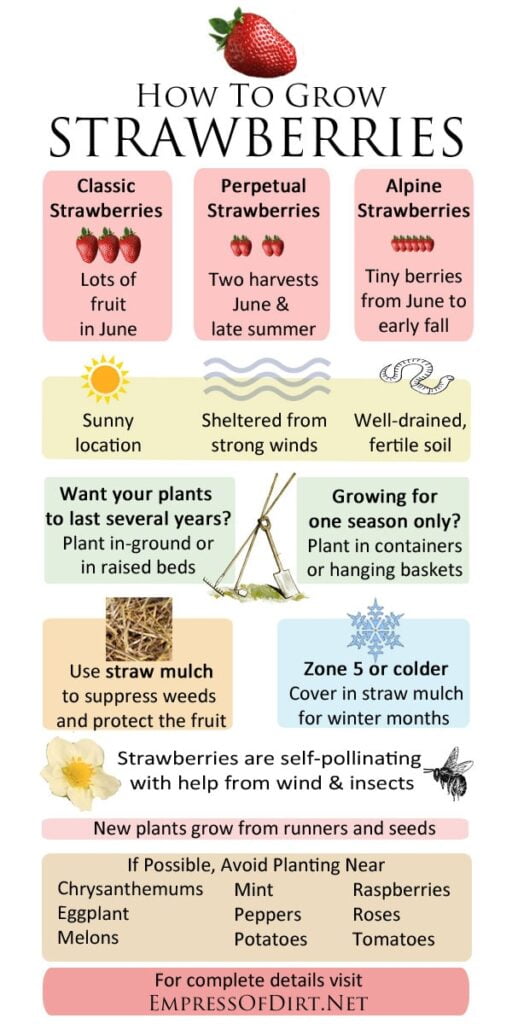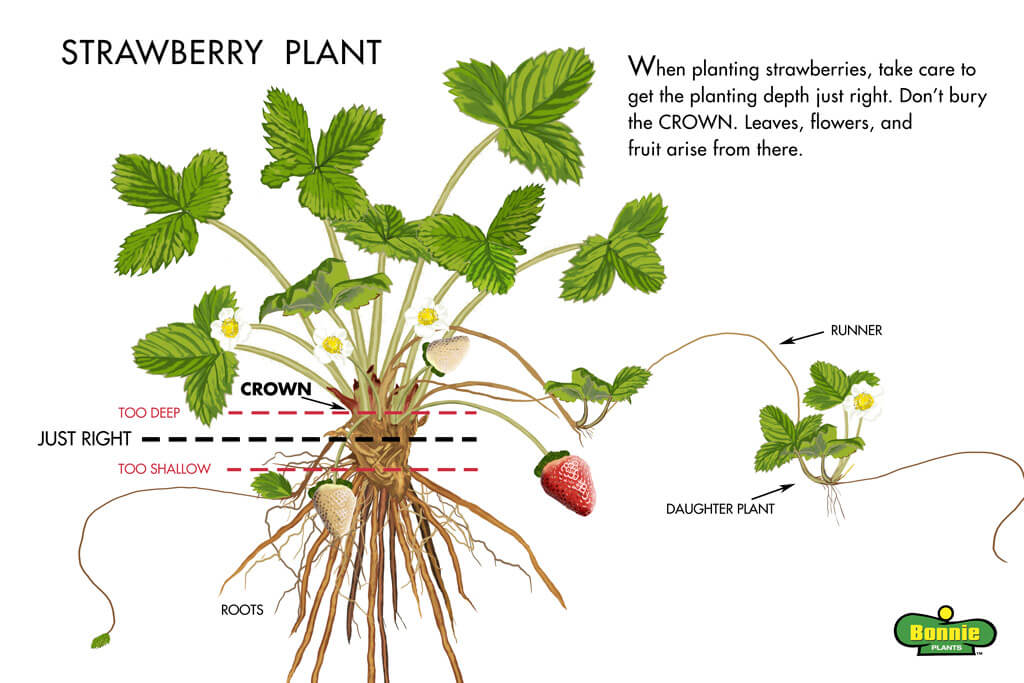Planting strawberries is a science that requires careful consideration of the optimal timing. The timing of when to plant strawberries greatly affects their growth, yield, and overall success. In order to maximize the potential of your strawberry harvest, it is crucial to understand the specific time of year that is most conducive for their planting. By being aware of the specific timing requirements, you can ensure the proper establishment and growth of your strawberry plants, setting the stage for a fruitful and bountiful harvest.

Factors to Consider When Planting Strawberries
Climatic Conditions
When considering planting strawberries, it is crucial to take into account the climatic conditions of your region. Strawberries thrive in moderate temperatures, typically between 60-80°F (15-26°C). They require a specific number of chilling hours to ensure optimal growth and fruit production. Chilling hours are the number of hours a crop experiences temperatures below 45°F (7°C) during its dormant period. This requirement varies depending on the strawberry variety.
The Variety of Strawberries
Selecting the right strawberry variety is another essential factor to consider. Different varieties have varying requirements and performance in different climates. Some varieties, such as the ever-bearing types, produce fruit continuously throughout the growing season, while others, like the June-bearing types, produce a single large crop in early summer. Pay attention to their cold-hardiness, disease resistance, yield potential, and taste when choosing the variety that suits your climate and preferences.
Soil Preparation
Proper soil preparation is crucial for the success of your strawberry plants. Strawberries prefer well-drained soils with a pH level between 5.5-6.5. The soil should be prepared by removing any weeds, rocks, or debris and amended with organic matter like compost or well-rotted manure to improve its fertility and structure. It is recommended to conduct a soil test to determine the nutrient levels in your soil and make any necessary adjustments accordingly.
Availability of Planting Materials
Before planting strawberries, it is important to ensure the availability of planting materials. Strawberries can be propagated either using bare-rooted plants or through runners, which are the daughter plants produced by mature strawberry plants. Bare-rooted plants are dormant plants with their root systems exposed. They are commonly available during the late winter or early spring. Runners, on the other hand, are available during the summer months when the plants are actively growing and producing new shoots.
Planting Strawberries in Spring
Ideal Temperature Range
Spring is a popular time for planting strawberries in many regions due to the moderate temperatures that allow optimal growth. The ideal temperature range for planting strawberries in spring is between 60-75°F (15-24°C). This temperature range provides the necessary warmth for the plants to establish roots and promote vigorous growth.
Benefits of Planting in Spring
Planting strawberries in spring offers several advantages. Firstly, the plants have the entire growing season ahead of them to establish a strong root system and develop healthy foliage. They have ample time to flower and set fruit, resulting in a bountiful harvest. Additionally, the spring rains often provide a sufficient water supply, reducing the need for excessive irrigation.
Steps to Planting in Spring
To plant strawberries in spring, start by preparing the soil thoroughly. Remove any weeds or grass and amend the soil with organic matter. Dig holes large enough to accommodate the plant’s roots, ensuring the crown is level with the soil surface. Space the plants 12-18 inches apart in rows that are 3-4 feet apart. Water the plants immediately after planting to settle the soil around the roots. Apply a layer of mulch to conserve moisture and suppress weeds. Regularly water and monitor the plants for any signs of pests or diseases.

Planting Strawberries in Fall
Ideal Temperature Range
Fall planting is common in regions with milder climates. The ideal temperature range for planting strawberries in fall is between 50-60°F (10-15°C). This moderate temperature provides an optimal environment for root development and establishment before winter.
Benefits of Planting in Fall
Planting strawberries in fall offers several advantages. The plants can benefit from a long period of cool weather, which enhances root growth and allows for earlier fruiting the following year. By planting in fall, you can also take advantage of end-of-season sales on strawberry plants, making it a cost-effective option. In addition, fall-planted strawberries are less prone to disease and pest damage than spring-planted ones.
Steps to Planting in Fall
Start by preparing the soil as you would for spring planting. Remove any weeds or grass and amend the soil with organic matter. Dig holes large enough to accommodate the plant’s roots, ensuring the crown is level with the soil surface. Space the plants 12-18 inches apart in rows that are 3-4 feet apart. Water the plants thoroughly after planting. Once the plants are established, mulch the bed to protect them during the winter. Monitor the plants for moisture and inspect for any signs of pests or diseases.
Planting Strawberries in Summer
Ideal Temperature Range
Planting strawberries in summer can be challenging due to the higher temperatures and increased risk of heat stress. The ideal temperature range for planting strawberries in summer is between 60-70°F (15-21°C). However, it is crucial to ensure that the plants are protected from excessive heat and receive adequate moisture.
Challenges of Planting in Summer
Summer planting poses several challenges for strawberries. The heat and intense sunlight can cause stress to the plants, leading to wilting and reduced growth. Additionally, the risk of diseases and pests is higher during this time. Proper care and management are crucial to overcome these challenges and ensure the success of summer-planted strawberries.
Tips for Successful Summer Planting
To increase your chances of success when planting strawberries in summer, follow these tips:
Choose heat-tolerant varieties: Select strawberry varieties that are known for their ability to thrive in hot weather conditions.
Provide shade: Shield the plants from intense sunlight by providing shade using shade cloth or other sun-blocking materials.
Water consistently: Ensure that the plants receive adequate moisture by watering regularly. Be mindful of the increased water requirements during hot weather.
Mulch the beds: Apply a layer of mulch around the plants to conserve moisture, suppress weeds, and regulate soil temperatures.
Monitor for pests and diseases: Regularly inspect the plants for any signs of pests or diseases and take appropriate action at the earliest signs of infestation.

Planting Strawberries in Winter
Challenges of Planting in Winter
Winter is generally not the recommended time for planting strawberries due to the extreme cold temperatures in many regions. The freezing temperatures can damage or kill the plants, hindering their growth and development. However, in regions with mild winters, it may be possible to plant strawberries in protected environments such as greenhouses or high tunnels.
Protection and Care for Winter-Planted Strawberries
If you opt to plant strawberries in winter, it is important to provide adequate protection and care. Consider using row covers, straw mulch, or other insulation materials to protect the plants from freezing temperatures. Ensure that the plants receive sufficient light and ventilation while maintaining a stable temperature. Regularly monitor the plants for any signs of stress or disease and take appropriate measures to address them.
Best Time to Plant Strawberries Based on Climate
Planting Strawberries in Cold Climates
In cold climates, it is generally recommended to plant strawberries in late spring or early summer, after the danger of frost has passed. This allows the plants to benefit from the warmer temperatures while minimizing the risk of frost damage. Alternatively, you can start the plants indoors or in protected environments and transplant them into the garden once the weather is favorable.
Planting Strawberries in Temperate Climates
Temperate climates offer more flexibility in terms of planting times for strawberries. Spring and fall are both suitable seasons for planting, depending on the specific climatic conditions of the region. Spring planting allows for early establishment and fruiting, while fall planting allows for root development before winter.
Planting Strawberries in Hot Climates
Hot climates pose challenges for strawberry cultivation due to the extreme heat. It is best to avoid planting strawberries during the hottest months of the year. Instead, opt for planting in late winter or early spring when temperatures are milder. By providing shade, ample water, and proper care, strawberries can thrive in hot climates.

Considerations for Planting Strawberries in Different Regions
Strawberry Planting in North America
North America offers a diverse range of climates, from cold regions in the north to hot and arid regions in the south. When planting strawberries in North America, it is important to consider the specific climate and adapt the planting time accordingly. Consult local agricultural extension offices or experienced growers for guidance on the best planting times for your specific region.
Strawberry Planting in Europe
Europe encompasses a wide range of climates, from the cool and maritime climates of the United Kingdom to the Mediterranean climates of Southern Europe. The best planting times for strawberries in Europe vary depending on the specific location and climate. It is essential to research and consider the climatic conditions of your region, as well as the recommended planting times for different strawberry varieties.
Strawberry Planting in Asia
Asia is a vast continent with diverse climates, ranging from the cold regions of Siberia to the tropical climates of Southeast Asia. The best time to plant strawberries in Asia varies greatly depending on the specific country and region. It is crucial to consider the local climate and consult with local agricultural experts or experienced growers for guidance on the most suitable planting times and varieties for your specific location.
Strawberry Planting Calendar
Month-by-Month Guide for Planting Strawberries
To help you plan your strawberry planting, here is a month-by-month guide:
January: Prepare the soil and order planting materials if starting from bare-rooted plants.
February: Begin planting bare-rooted plants in early spring regions.
March: Continue planting bare-rooted plants. Start planting potted strawberries in late spring regions.
April: Finish planting bare-rooted plants. Continue planting potted strawberries.
May: Complete planting potted strawberries. Monitor and care for the growing plants.
June: Strawberry plants should be well-established and flowering. Ensure they receive ample water, nutrients, and pest/disease control.
July: Harvest strawberries from ever-bearing varieties. Provide ongoing care and maintenance.
August: Continue harvesting from ever-bearing varieties. Monitor for pests and diseases.
September: Prepare the garden beds for fall planting. Order planting materials if needed.
October: Start planting strawberries in fall. Monitor and protect the plants from frost.
November: Complete fall planting. Mulch the beds to protect the plants during winter.
December: Inspect and care for winter-planted strawberries in protected environments.
What to Do After Planting
After planting strawberries, it is crucial to provide optimal care and maintenance to ensure their successful growth and fruit production. Regularly water the plants, monitor for pests and diseases, and provide appropriate fertilization. Weed the beds regularly to suppress weed growth, as weeds can compete with strawberries for nutrients and water. Properly prune the plants to promote healthy growth and remove any damaged or diseased foliage. Harvest ripe strawberries promptly and enjoy the delicious fruits of your labor.

Tips for Successful Strawberry Planting
Choosing the Right Variety
When selecting strawberry varieties, consider factors such as flavor preference, cold-hardiness, disease resistance, and yield potential. Choose varieties that are suitable for your climate and meet your specific requirements.
Preparing the Soil Adequately
Thoroughly preparing the soil is vital for the success of your strawberry plants. Remove any weeds, rocks, or debris and amend the soil with organic matter to improve its fertility and structure. Conduct a soil test to determine the nutrient levels and pH, and make necessary adjustments to ensure optimal growing conditions.
Proper Planting Techniques
When planting strawberries, ensure that the crown is level with the soil surface. Plant them in well-spaced rows to allow for air circulation and prevent disease spread. Water the plants immediately after planting to settle the soil around the roots and provide a good start for establishment.
Providing Optimal Care and Maintenance
Regularly water the plants to prevent drought stress, especially during hot weather. Monitor for pests and diseases, and take appropriate action at the first signs of infestation to prevent further damage. Fertilize the plants at the recommended intervals and provide adequate thinning to promote healthy growth. Mulch the beds to conserve moisture and suppress weed growth.
Dealing with Common Pests and Diseases
Strawberries are susceptible to various pests and diseases, including aphids, slugs, fungal diseases, and viruses. Implement integrated pest management strategies, such as cultural practices, biological controls, and judicious use of pesticides, to prevent and manage these issues. Regularly inspect the plants for any signs of pests or diseases, and take prompt action to mitigate their impact.
Conclusion
Planting strawberries requires careful consideration of various factors, including climatic conditions, variety selection, soil preparation, and availability of planting materials. The ideal planting time for strawberries depends on the climate of your region, with spring and fall being popular choices in temperate climates. However, specific considerations should be made for planting strawberries in different regions around the world. By following proper planting techniques, providing optimal care, and dealing with common pests and diseases, you can enjoy a bountiful harvest of delicious strawberries. Happy planting!



